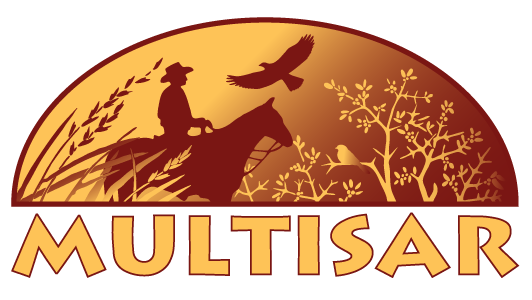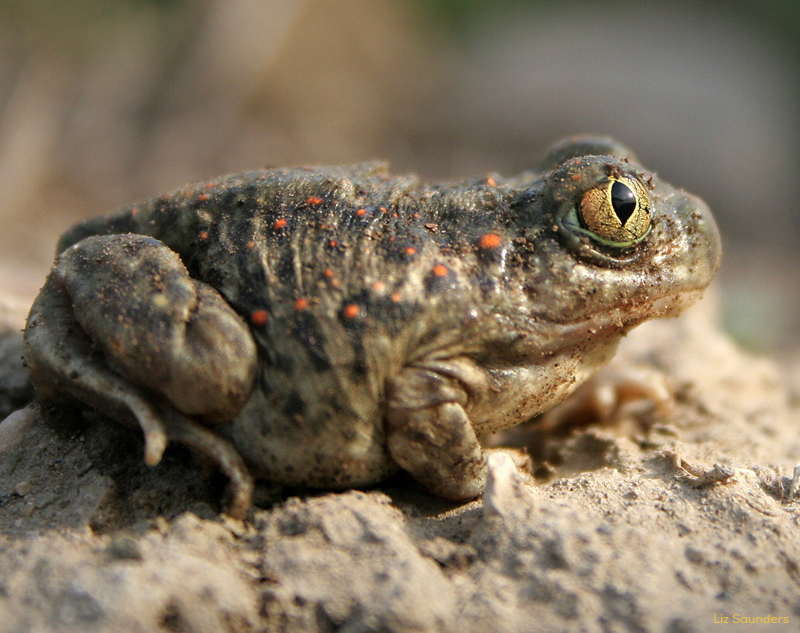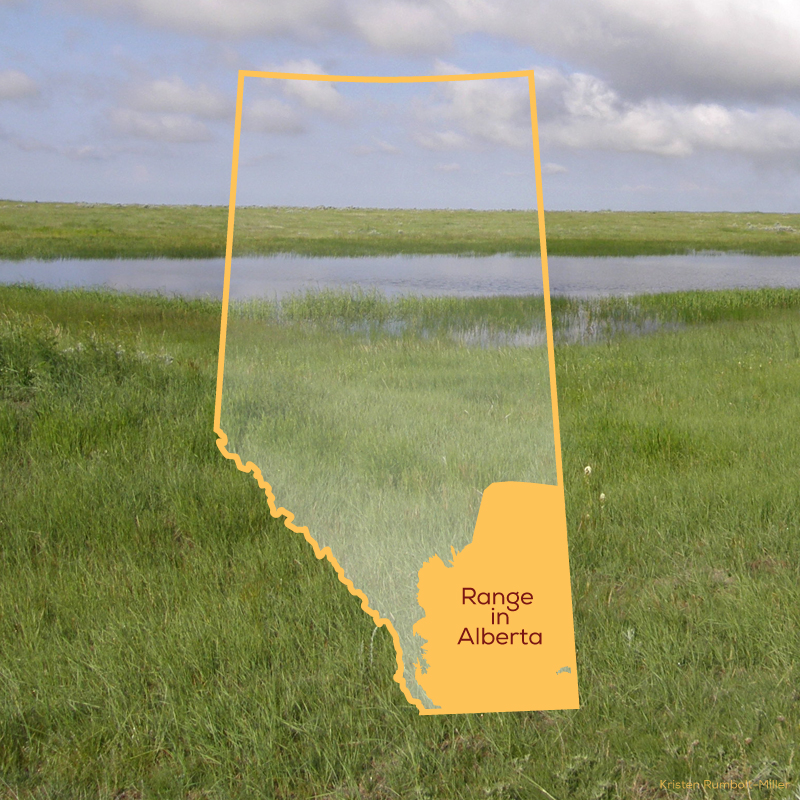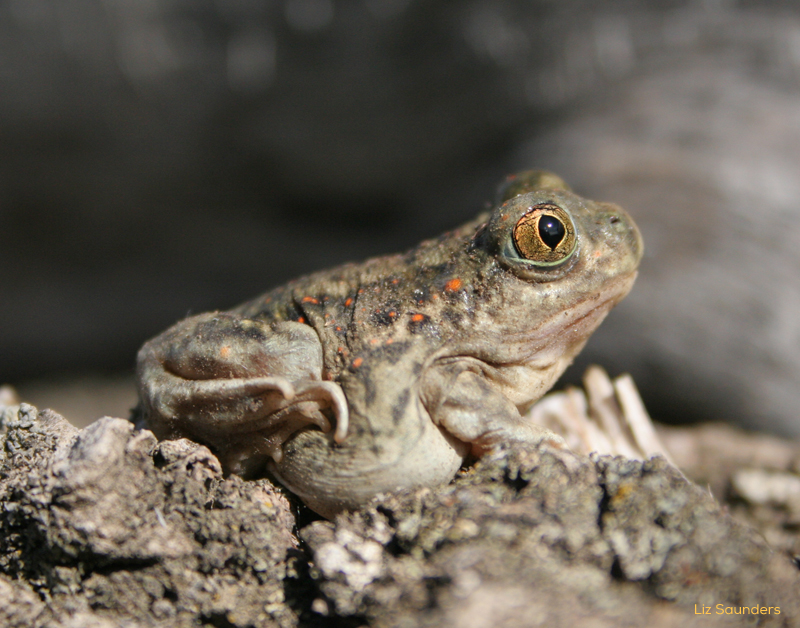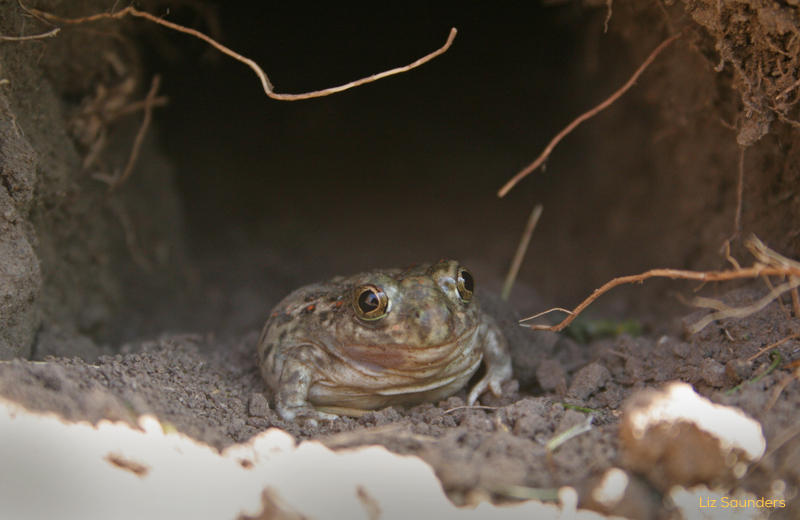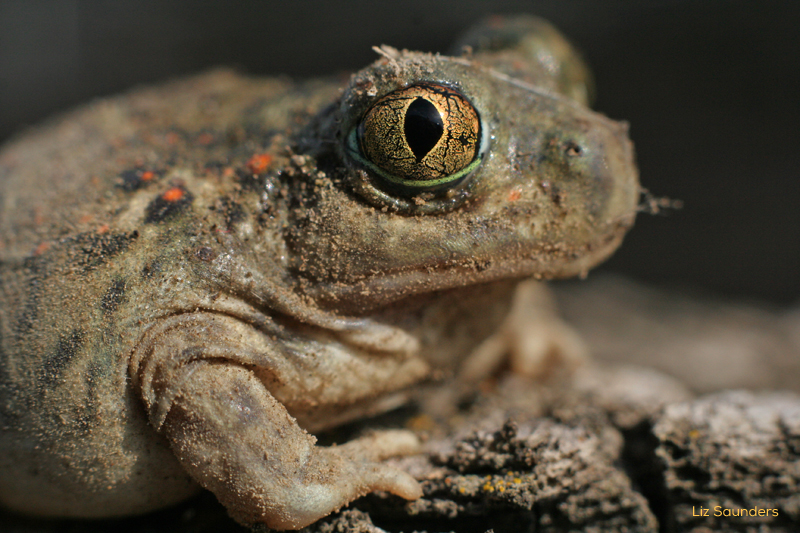Plains Spadefoot
Spea bombifrons
Habitat:
Forage and hibernate in grasslands and pasture lands on sandy soil. Breed in temporary rain-filled ponds.
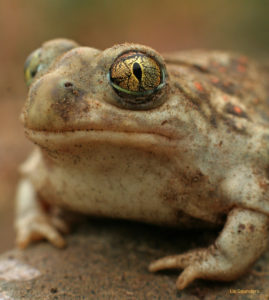
The plains spadefoot is the only amphibian in Alberta with vertical pupils.
Looks Like a Toad, Quacks Like a Duck
Plains Spadefoots have some warts like a toad, but are moist and thin-skinned like a frog. Their eyes are cat-like, with a vertical pupil. No other amphibian in Alberta has vertical pupils. In addition to their unusual appearance, their call sounds like a duck quack! They are actually neither frogs nor toads, but belong to their own family – Scaphiopodidae.
Hop To It
Spadefoots breed in temporary ponds formed after heavy rains. Because such ponds dry up quickly, Spadefoots rush to the ponds during rain events and breed quickly so that their eggs and larvae have time to develop before the ponds dry up. They have the fastest larval development of all known amphibians.
Hear Them While You Can
Because of their exceptionally short breeding period and reliance on temporary ponds, the opportunity to witness the deafening chorus of calling Spadefoots only comes about occasionally – for one or two nights and only in wet years. The sound of a pond full of calling Spadefoots can be heard up to 3km away!
Going Underground
In dry periods and during the winter, Plains Spadefoots use spade-like appendages on their hind feet to dig themselves backwards into the ground. They remain below the frost line during the winter.
Population
Because of their reliance on heavy summer rainfalls and their sporadic breeding, it has not been possible to gain a population estimate for Plains Spadefoots in Alberta. They are considered “May be at Risk” because their breeding habitat is decreasing.
Current Threats
- Loss of breeding ponds, primarily due to draining, filling and tilling for cultivation.
- Road mortality during night-time migration to breeding wetlands.
- Pesticide use in or near breeding ponds.
- Water management projects that create permanent water bodies and reduce the number of temporary ponds.
- Oil and gas activities can create trenches and pits that trap Spadefoots and other amphibians.
Public
- Become a volunteer for the Alberta Volunteer Amphibian Monitoring Program.
- Educate yourselves and your family about this unique species and its role in the ecosystem.
- Encourage landowners that are good stewards of the land by purchasing their agricultural products.
Landowners
- Avoid tilling temporary wetlands, even in dry years, as this may decrease their ability to hold water in wet years.
- Maintain temporary wetlands and do not convert them to permanent water bodies.
- If you have Plains Spadefoots on your land, consult with a biologist to identify frog habitats and learn how to balance your operational needs with the habitat needs of Spadefoots.
- Avoid using pesticides and chemical fertilizers near water bodies, temporary and permanent.
- Talk to your children and neighbours about the privilege of having Spadefoots on your land.
- Contact MULTISAR to discuss what management practices might be beneficial to the Plains Spadefoot on your property.
What MULTISAR Does
- Participates in amphibian surveys in the Grassland Natural Region.
- Provides information about Spadefoots and recommendations to landowners on how to manage land in ways that will protect and enhance their populations and habitats.
- Finds and assists in implementing habitat improvement solutions compatible with agricultural operations.
Species@Risk Quiz
Test your knowledge about Alberta’s grassland species at risk
Plains Spadefoot
Question 1 |
The Plains Spadefoot is:
A type of frog
| |
A type of toad | |
In its own unique family |
Question 2 |
They are called Spadefoots because:
Their front feet are spade-like in shape | |
The spots on their backs look like spades
| |
Of the tiny “spades” on their hind feet |
Question 3 |
The call of a Plains Spadefoot sounds like a:
Duck quacking
| |
Cat meowing | |
Rubbing your fingers down the teeth of a comb
|
Question 4 |
Plains Spadefoots breed in ponds that are:
At least 1 m deep for most of the year and never freeze to the bottom
| |
Created temporarily by heavy rainfall events | |
Inhabited by a variety of fish species |

